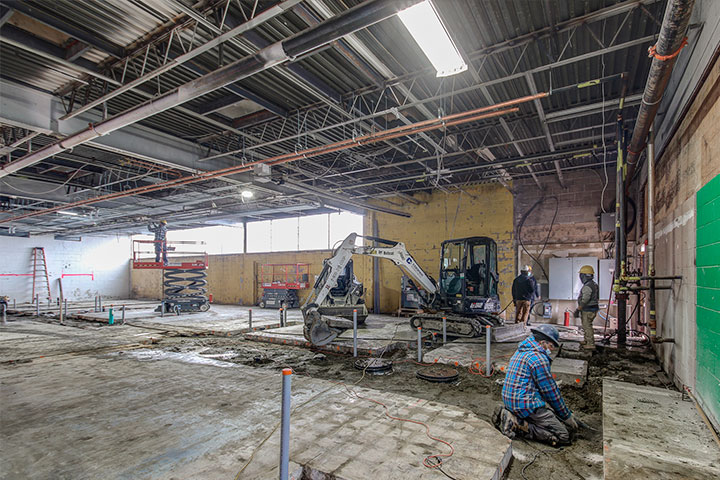
Embarking on a construction project in Canada demands a throughly understanding of the roles and responsibilities associated with construction management and general contracting. These two distinct approaches play pivotal roles in bringing a project to fruition, yet they differ significantly in their methodologies and scopes. Let’s delve into the nuances that set construction management and general contracting apart, shedding light on their respective features and benefits.
Construction Management
Construction management is a strategic and collaborative approach to overseeing the entire construction process. It involves a designated construction manager who acts as a facilitator, coordinating various aspects of the project from its inception to completion. One of the key attributes of construction management is its involvement in the early stages of a project, often during the design and planning phases.
Key Features of Construction Management in Canada:
Early Involvement
Construction management is characterized by its early entry into the project life cycle. The construction manager collaborates with stakeholders from the outset, providing valuable input during the design phase. This proactive involvement aims to optimize the construction process, enhance efficiency, and minimize potential issues.
Project Control
Construction managers assume a central role in project control. They monitor and manage various project elements, including budgeting, scheduling, and quality assurance. By maintaining a strong grip on these aspects, they pushing the project according to plan and meets the specified standards.
Risk Management
The construction manager is well-versed in identifying and mitigating risks. With their experience and expertise, they can anticipate challenges, devise contingency plans, and navigate unforeseen circumstances effectively. This proactive risk management approach contributes to the overall success of the project.
Subcontractor Coordination
Construction management involves the hiring and coordination of subcontractors. The construction manager is responsible for assembling a skilled and qualified team to execute the project’s various components. Effective communication and collaboration with subcontractors are crucial for seamless project execution.
General Contracting
Contrastingly, general contracting is a more traditional and linear approach to construction project delivery. In this model, the general contractor is the primary point of contact for the client, overseeing the construction phase after the design has been completed. General contracting is often associated with a competitive bidding process, where contractors submit bids for the project based on provided specifications.
General Contracting for the Pre-Construction of Your Retail Store?
Click here for Retail General Contracting Services
Key Features of General Contracting in Canada
Bidding Process
General contracting typically involves a competitive bidding process, where contractors submit proposals based on project specifications. The client selects the contractor based on cost, experience, and reputation. This process is formalized and aims to secure the most qualified contractor for the project.
Single-Point Accountability
The general contractor assumes a central role in the construction phase, acting as a single point of accountability. They are responsible for coordinating everything of the project, including managing subcontractors, scheduling, and budget adherence. The client interacts primarily with the general contractor, streamlining communication channels.
Fixed Price Contracts
General contracting often employs fixed-price contracts, where the contractor agrees to complete the project for a predetermined sum. This provides clients with cost predictability and places the onus on the contractor to manage expenses effectively.
Limited Involvement in Design
Unlike construction management, general contracting typically does not involve significant input during the design phase. The general contractor’s role begins once the design is finalized, focusing on construction execution rather than influencing the project’s early stages.
Choosing the Right Approach
The choice between construction management and general contracting hinges on various factors, including project complexity, timeline, budget constraints, and the client’s preferred level of involvement. Both approaches have their merits, and the decision should fit the specific needs and goals of the project.
Retail Construction Service & Projects
Retail Construction Company / List of Retail Construction Projects
Complex Projects and Client Involvement
Construction management is often preferred for complex projects that benefit from early collaboration and input. Construction management is more suitable for clients who want to be closely involved in the decision-making process and value flexibility.
Cost Predictability and Traditional Projects
With its competitive bidding process and fixed-price contracts, general contracting is well-suited for clients seeking cost predictability and a more traditional project delivery method. This approach is often favoured for straightforward projects with well-defined scopes.
In the Canadian construction landscape, the choice between construction management and general contracting is a critical decision that significantly influences a project’s outcome. Construction management offers early involvement, proactive risk management, and collaboration, while general contracting provides a traditional, streamlined approach with fixed-price contracts.
>> Continue reading: What is the millwork in retail construction?
Ultimately, the decision should align with the project’s unique requirements and the client’s priorities. Whichever approach is chosen, success lies in effective communication, collaboration, and the ability to adapt to the evolving dynamics of the construction industry in Canada.
